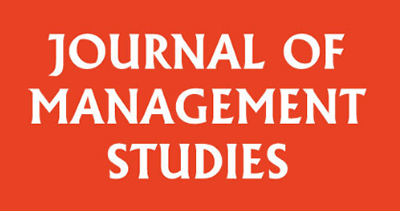
Short Summary
This blog uncovers how negative emotions, often hidden behind the formalities of performance appraisals, quietly reshape core organizational routines. Drawing on qualitative data from professional service firms in Jordan, our study reveals how employees respond to unfairness with an “ecology of actions” that includes distancing, working around, and buffering emotional regulation—ultimately pushing appraisal routines away from their intended purpose.
Why Do Performance Appraisals Often Fail?
Performance appraisals are meant to align individual effort with organizational goals. But anyone who has been through one will know: they’re often emotionally draining, frustrating, and sometimes outright demoralizing. Our research digs beneath the surface to ask why—and how—this happens.
Routines are repeated patterns of actions in organizations—like performance reviews—that feel familiar because they follow recognizable steps over time. But they are not fixed scripts. While routines offer stability, they also evolve as people interpret and respond to situations in different ways—often shaped by emotion. Most research on workplace routines looks at what people think and do. But we focus on how people feel during these routines. Specifically, we look at rule-enforcing routines—like performance appraisals—that are designed to make sure employees follow certain rules and meet expectations. Instead of just looking at how managers run these appraisals, we show how employees’ negative emotions—such as fear, frustration, or resentment—can quietly disrupt how well these systems work.
A Micro-Level Look at Emotions in Action
We studied performance appraisal routines in subsidiaries of global professional service firms operating in Jordan, a non-Western setting where informal norms, such as informal networking, frequently coexist with formal HR practices. Studying a non-Western context enables us to examine the performance appraisal routine in a ‘wild’ organizational setting—one where formal structures are often blurred by informal norms and practices. This allows for a richer understanding of how divergent and idiosyncratic behaviours become embedded in the routine, revealing dynamics that are less visible in more regulated or structured Western contexts. Using in-depth interviews and documentary data, we focused not on how managers administer appraisals, but on how employees live through them—emotionally and behaviorally.
Our data shows that negative emotional experiences are not isolated incidents but are often cumulative, shaping how employees engage with the PA process over time. These feelings are typically triggered by perceived unfairness, lack of recognition, or managerial bias—factors amplified in high-pressure, performance-focused environments.
The Ecology of Actions
What emerged is what we call an “ecology of actions”—a set of responses employees use to manage and redirect their emotional responses when formal channels fail them. This includes:
- Distancing: Emotionally detaching from the process to preserve a sense of self-worth.
- Working Around: Engaging in surface-level compliance or strategic submission to the system without internalizing its goals.
- Buffering Regulation to the Future: Delaying emotional reactions or adopting coping strategies that spread emotional regulation over time.
These actions aren’t random—they’re deeply relational, context-sensitive, and tied to individual survival strategies. So even as routines appear stable on the surface, they are constantly being reshaped in practice. For instance, some employees in our study began distancing themselves from frequent feedback meetings because they anticipated them to be emotionally charged or unfair. Others performed the routine mechanically—submitting feedback forms without genuine reflection—to avoid further emotional discomfort. So even as the appraisal routine appears stable, it is constantly being reshaped by how people feel and act in response to it. These actions aren’t random—they’re deeply relational, context-sensitive, and tied to individual survival strategies. Over time, they reshape both the performative (what people actually do) and ostensive (what people believe the routine is supposed to be) dimensions of the appraisal routine.
Why This Matters Beyond Academia
While this research contributes to theories of organizational routines and HRM, its implications stretch much further. In organizations across the globe, performance appraisal remains a cornerstone of workforce management—and a common source of disillusionment.
For practitioners, our study suggests that improving PA outcomes requires more than tweaking forms or recalibrating KPIs. It calls for a deeper understanding of the emotional labor employees invest in simply navigating these systems.
For HR leaders, recognizing the emotional side of routine processes opens the door to more empathetic and effective people management strategies. For organizations operating in emerging markets, it highlights the importance of tailoring global systems to local realities.
And for anyone who has ever left a performance appraisal feeling invisible, unheard, or unfairly judged—this research validates that those feelings matter, and that they shape how organizations function, often in unseen ways.

0 Comments